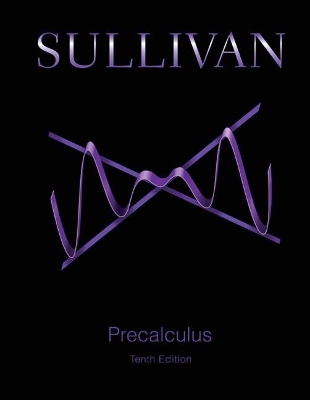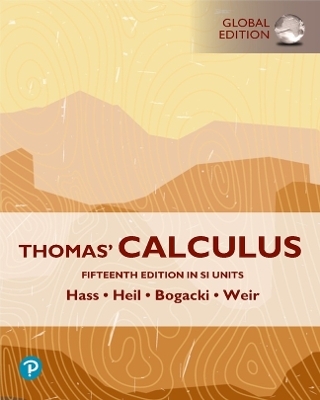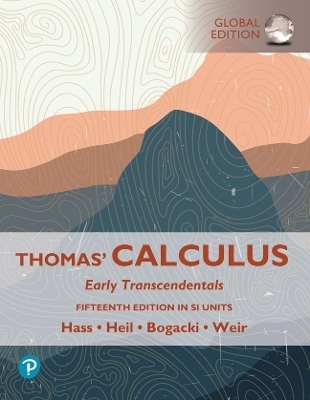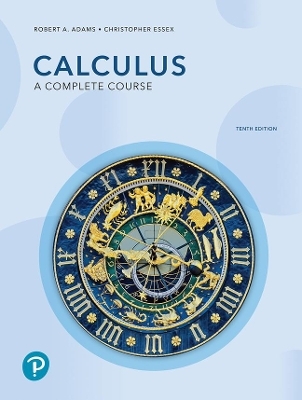
Precalculus Plus MyLab Math with eText -- Access Card Package
Pearson
978-0-321-97898-1 (ISBN)
- Titel erscheint in neuer Auflage
- Artikel merken
Used books, rentals, and purchases made outside of Pearson
If purchasing or renting from companies other than Pearson, the access codes for Pearson's MyLab & Mastering products may not be included, may be incorrect, or may be previously redeemed. Check with the seller before completing your purchase.
Prepare. Practice. Review.
Mike Sullivan’s time-tested approach focuses students on the fundamental skills they need for the course: preparing for class, practicing with homework, and reviewing the concepts. The Tenth Edition has evolved to meet today’s course needs.
0321978986 / 9780321978981 Precalculus Plus MyMathLab with eText -- Access Card Package
Package consists of:
0321431308 / 9780321431301 MyMathLab -- Glue-in Access Card
0321654064 / 9780321654069 MyMathLab Inside Star Sticker
0321979079 / 9780321979070 Precalculus
Michael Sullivan, Emeritus Professor of Mathematics at Chicago State University, received a Ph.D. in mathematics from the Illinois Institute of Technology. Mike taught at Chicago State for 35 years before recently retiring. He is a native of Chicago’s South Side and divides his time between a home in Oak Lawn IL and a condo in Naples FL. Mike is a member of the American Mathematical Society and the Mathematical Association of America. He is a past president of the Text and Academic Authors Association and is currently Treasurer of its Foundation. He is a member of the TAA Council of Fellows and was awarded the TAA Mike Keedy award in 1997 and the Lifetime Achievement Award in 2007. In addition, he represents TAA on the Authors Coalition of America. Mike has been writing textbooks for more than 35 years and currently has 15 books in print, twelve with Pearson Education. When not writing, he enjoys tennis, golf, gardening, and travel. Mike has four children: Kathleen teaches college mathematics; Michael III teaches college mathematics and is his coauthor on two precalculus series; Dan works in publishing; and Colleen teaches middle-school and secondary school mathematics. Twelve grandchildren round out the family.
1. Graphs
1.1 The Distance and Midpoint Formulas
1.2 Graphs of Equations in Two Variables; Intercepts; Symmetry
1.3 Lines
1.4 Circles
2. Functions and Their Graphs
2.1 Functions
2.2 The Graph of a Function
2.3 Properties of Functions
2.4 Library of Functions; Piecewise-defined Functions
2.5 Graphing Techniques: Transformations
2.6 Mathematical Models: Building Functions
3. Linear and Quadratic Functions
3.1 Properties of Linear Functions and Linear Models
3.2 Building Linear Models from Data
3.3 Quadratic Functions and Their Properties
3.4 Build Quadratic Models from Verbal Descriptions and from Data
3.5 Inequalities Involving Quadratic Functions
4. Polynomial and Rational Functions
4.1 Polynomial Functions and Models
4.2 Properties of Rational Functions
4.3 The Graph of a Rational Function
4.4 Polynomial and Rational Inequalities
4.5 The Real Zeros of a Polynomial Function
4.6 Complex Zeros; Fundamental Theorem of Algebra
5. Exponential and Logarithmic Functions
5.1 Composite Functions
5.2 One-to-One Functions; Inverse Functions
5.3 Exponential Functions
5.4 Logarithmic Functions
5.5 Properties of Logarithms
5.6 Logarithmic and Exponential Equations
5.7 Financial Models
5.8 Exponential Growth and Decay Models; Newton’s Law; Logistic Growth and Decay Models
5.9 Building Exponential, Logarithmic, and Logistic Models from Data
6. Trigonometric Functions
6.1 Angles and Their Measure
6.2 Trigonometric Functions: Unit Circle Approach
6.3 Properties of the Trigonometric Functions
6.4 Graphs of the Sine and Cosine Functions
6.5 Graphs of the Tangent, Cotangent, Cosecant, and Secant Functions
6.6 Phase Shift; Sinusoidal Curve Fitting
7. Analytic Trigonometry
7.1 The Inverse Sine, Cosine, and Tangent Functions
7.2 The Inverse Trigonometric Functions (Continued)
7.3 Trigonometric Equations
7.4 Trigonometric Identities
7.5 Sum and Difference Formulas
7.6 Double-angle and Half-angle Formulas
7.7 Product-to-Sum and Sum-to-Product Formulas
8. Applications of Trigonometric Functions
8.1 Right Triangle Trigonometry; Applications
8.2 The Law of Sines
8.3 The Law of Cosines
8.4 Area of a Triangle
8.5 Simple Harmonic Motion; Damped Motion; Combining Waves
9. Polar Coordinates; Vectors
9.1 Polar Coordinates
9.2 Polar Equations and Graphs
9.3 The Complex Plane; DeMoivre’s Theorem
9.4 Vectors
9.5 The Dot Product
9.6 Vectors in Space
9.7 The Cross Product
10. Analytic Geometry
10.1 Conics
10.2 The Parabola
10.3 The Ellipse
10.4 The Hyperbola
10.5 Rotation of Axes; General Form of a Conic
10.6 Polar Equations of Conics
10.7 Plane Curves and Parametric Equations
11. Systems of Equations and Inequalities
11.1 Systems of Linear Equations: Substitution and Elimination
11.2 Systems of Linear Equations: Matrices
11.3 Systems of Linear Equations: Determinants
11.4 Matrix Algebra
11.5 Partial Fraction Decomposition
11.6 Systems of Nonlinear Equations
11.7 Systems of Inequalities
11.8 Linear Programming
12. Sequences; Induction; the Binomial Theorem
12.1 Sequences
12.2 Arithmetic Sequences
12.3 Geometric Sequences; Geometric Series
12.4 Mathematical Induction
12.5 The Binomial Theorem
13. Counting and Probability
13.1 Counting
13.2 Permutations and Combinations
13.3 Probability
14. A Preview of Calculus: The Limit, Derivative, and Integral of a Function
14.1 Finding Limits Using Tables and Graphs
14.2 Algebra Techniques for Finding Limits
14.3 One-sided Limits; Continuous Functions
14.4 The Tangent Problem; The Derivative
14.5 The Area Problem; The Integral
Appendix A: Review
A.1 Algebra Essentials
A.2 Geometry Essentials
A.3 Polynomials
A.4 Synthetic Division
A.5 Rational Expressions
A.6 Solving Equations
A.7 Complex Numbers; Quadratic Equations in the Complex Number System
A.8 Problem Solving: Interest, Mixture, Uniform Motion, Constant Rate Job Applications
A.9 Interval Notation; Solving Inequalities
A.10 nth Roots; Rational Exponents
Appendix B: Graphing Utilities
B.1 The Viewing Rectangle
B.2 Using a Graphing Utility to Graph Equations
B.3 Using a Graphing Utility to Locate Intercepts and Check for Symmetry
B.4 Using a Graphing Utility to Solve Equations
B.5 Square Screens
B.6 Using a Graphing Utility to Graph Inequalities
B.7 Using a Graphing Utility to Solve Systems of Linear Equations
B.8 Using a Graphing Utility to Graph a Polar Equation
B.9 Using a Graphing Utility to Graph Parametric Equations
| Erscheint lt. Verlag | 24.9.2015 |
|---|---|
| Reihe/Serie | Sullivan & Sullivan Precalculus Titles |
| Sprache | englisch |
| Maße | 100 x 100 mm |
| Gewicht | 100 g |
| Themenwelt | Mathematik / Informatik ► Mathematik ► Analysis |
| ISBN-10 | 0-321-97898-6 / 0321978986 |
| ISBN-13 | 978-0-321-97898-1 / 9780321978981 |
| Zustand | Neuware |
| Haben Sie eine Frage zum Produkt? |
aus dem Bereich



